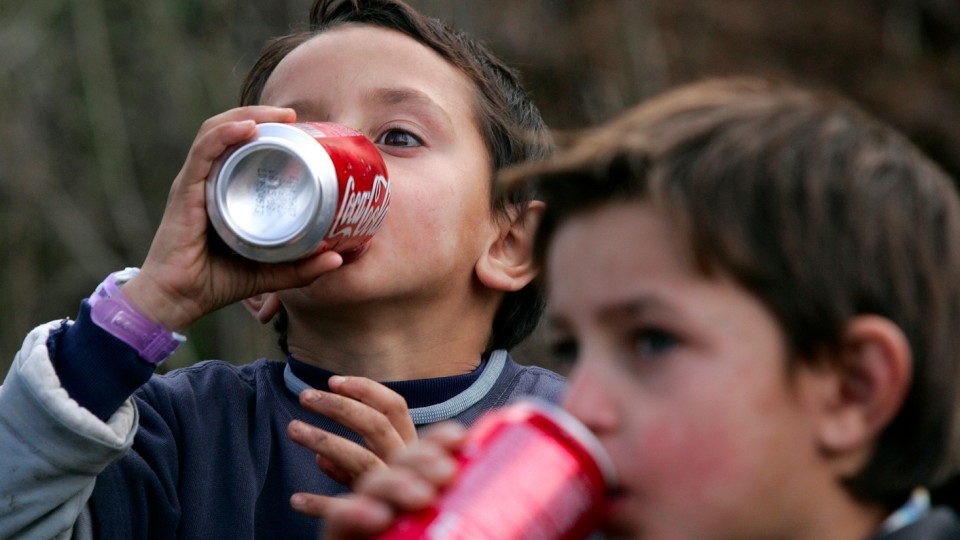
The latest poll into sugary beverage preferences for children and adults in Australia has shown that our taste for sugary drinks decreases with age.
Fruit juice based drinks top the list for kids under the age of 14, while older Australians prefer carbonated beverages.
Preference for fruit based drinks loses significant ground in older consumers, with 62.3 per cent of kids aged 6-13 drinking at least one per week, a figure which plummets to 26.9 per cent in teenagers. Carbonated beverage consumption is far more even, however, with 57.8 per cent of kids drinking at least one per week against 47.7 per cent of teenagers and adults.
Although the new information from Roy Morgan seems obvious, the research clearly demonstrates several trends of interest to retailers, including a marked difference in the consumption of Frozen Carbonated Beverages and Frozen Uncarbonated Beverages, as well as sports drinks. With 28.6 per cent of kids claiming to have drunk at least one ‘Slurpee’ style beverage in an average week, only 3.7 per cent of teenagers and adults said the same.
Kids under 14 even outdrank older Australians by more than double in the sports drinks category, 13 per cent to 5.8 per cent.
The only category in which teenagers and adults outweighed kids was in energy drinks, but not by far: 5.5 per cent to 4.2 per cent.
Roy Morgan Research CEO Michele Levine said the survey of nearly 18,000 Australians (2876 children aged 6-13, surveyed between July 2015-June 2016) left no room for doubt that children preferred sugary drinks.
“But with the exception of fruit juices/drinks, which are consumed by almost identical proportions of 6-9 year-olds and 10-13 year-olds, it’s the older group of kids leading this trend– particularly for soft drinks, which are enjoyed by almost two-thirds of 10-13 year-olds in an average week,” she said.
“Some drinks—such as cordials and fruit juice—are equally popular among boys and girls, while some tend to be favoured by one gender more than the other.
“A higher proportion of girls (29.9 per cent) than boys (27.5 per cent) consume frozen drinks like Slurpees and Slushies, for example, while boys (16.5 per cent) are much more likely than girls (9.2 per cent) to opt for sports drinks.
“While the proportion of children drinking these beverages is obviously much higher than that of their older counterparts, these gender differences apply to both age groups.”
Ms Levine said the sports drink category provided a striking example of how children could be “as receptive to a brand’s marketing as adults”.
“As we reported last year, consumption of sports drinks is elevated among sporty Australians (aged 14+) – a pattern that also applies to 6-13 year-olds,” she said.
“Roy Morgan data reveals that kids who consume these beverages play sport for an average of seven hours, 16 minutes per week…almost two-and-a-half hours more than the average Aussie child (four hours, 54 minutes).”
The academic viewpoint
Flinders University School of Health Sciences (Nutrition and Dietetics) associate lecturer Dr Kacie Dickinson said the information in the Roy Morgan poll findings were “not new findings”.
“It confirms what we already know, kids and adults drink too much SSBs,” she said.
“This supports data previously published from the Australian Health Survey that indicate SSB consumption increases with age from 2-18 years, peaks among 19-30 years olds and then declines among adults over 30years.
“These results don’t tell us about how much SSBs consumers are drinking [so we] can’t distinguish between a child consuming an SSB once per week, compared with a child consuming SSBs every day of the week.
“This would help understand whether the SSB consumption may be detrimental to a child’s health.”
Dr Dickinson highlighted further issues with the report, including a lack of information about data collection.
“We also aren’t told about how the data was collected and whether the 6-13 years were interviewed or their parents reported whether they were drinking SSB – relying on younger children recalling their food and drink intake could mean some inaccuracies in the data,” she said.
“This report can’t tell us anything about preferences for SSBs.
“For children aged 6-13, parents control access to food and drink – so really it probably points to parent’s allowing access to these drinks and probably selecting them for convenience, rather than the children’s preference for sugary drinks.
“Also fruits juices may be regularly offered by parents who perceived them as healthy, when in fact they are also classified as a SSB.”
She also suggested that the most concerning finding was that the consumption of energy drinks by 6-13 year olds was almost as high as 14+ year olds.
“Energy drinks often contain caffeine and other stimulant additives and have been associated with heart problems in young adults when consumed in excess amounts,” she said.
“Energy drinks should not be consumed by children and it’s dangerous that companies market these kinds of beverages to children.”

